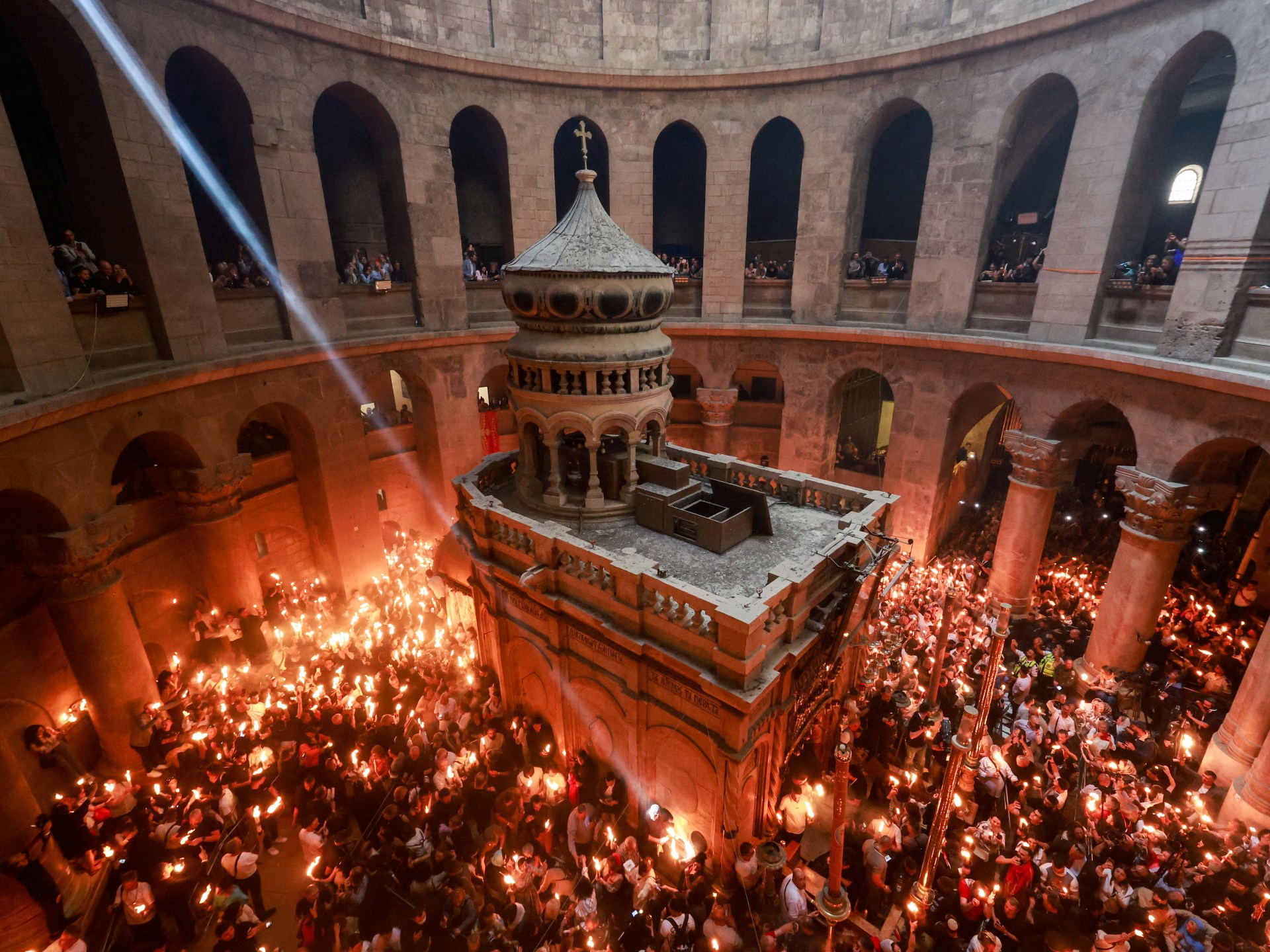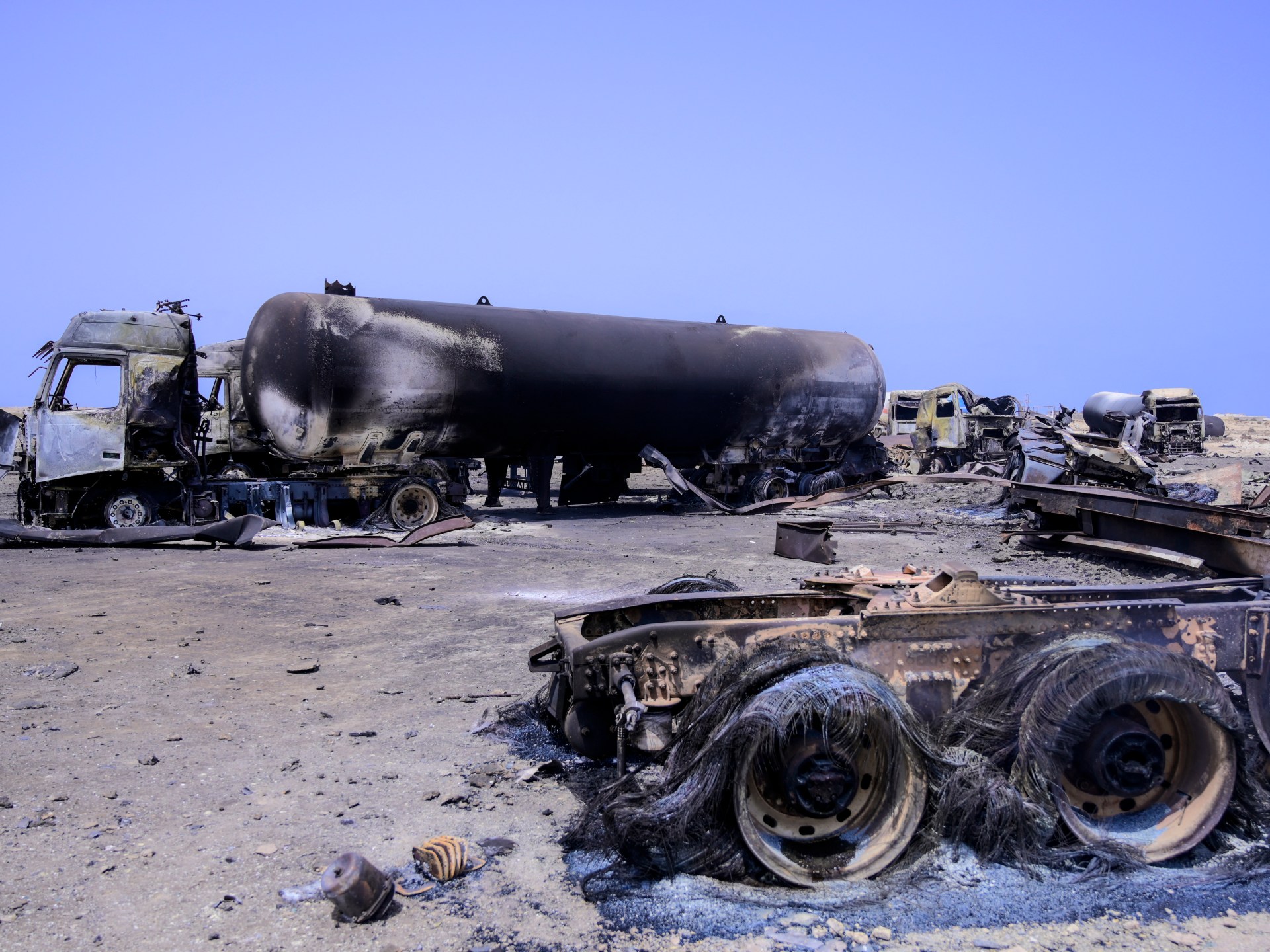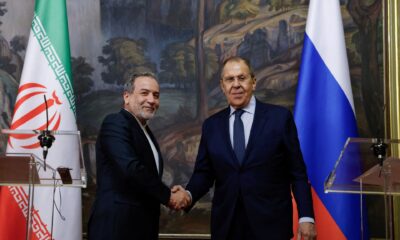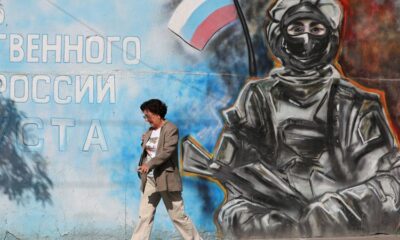Middle East
A simple illustrated guide to zakat, answers to 7 common questions | Religion News

With the fasting month of Ramadan in its final days, many Muslims around the world prepare to fulfil another essential pillar of their faith – giving zakat.
Zakat is a compulsory form of charity in Islam, aimed at supporting the needy and promoting economic equality.
In this visual explainer, we answer seven common questions about zakat to help you understand its purpose, calculations and benefits.
What are zakat and sadaqah?
Zakat is one of the five pillars of Islam, making it a core act of worship. The word zakat means purification or growth and is commanded in the Quran as a means to purify wealth, promote social justice and help those in need.

Zakat is mandatory for Muslims who meet the financial threshold, known as nisab, and is given annually at a fixed percentage of 2.5 (one-40th) of one’s wealth. More on how this is calculated, later.
Sadaqah, on the other hand, is a voluntary charity of any amount that can be given at any time.
Who is required to give zakat?
Zakat is obligatory for adult Muslims whose wealth is above the nisab threshold, the minimum amount needed to be eligible to pay zakat.
The nisab is equivalent to 85gm (3 troy ounces) of gold, or roughly $9,000 based on current market prices.

In addition to the gold standard for determining the nisab amount, there is also a silver standard. The nisab based on silver is equivalent to 595gm (19 troy ounces) of the metal. This accommodates different economic conditions and ensures that zakat is accessible and relevant to a wide range of people.

If a Muslim’s wealth remains above this threshold for a full lunar year, they must pay zakat.
What are the different types of zakat?
There are two main types of zakat: zakat al-mal and zakat al-fitr.
Zakat al-mal, meaning “zakat on wealth”, is the most commonly known form of zakat. It is an obligation requiring Muslims whose wealth exceeds the nisab threshold to donate 2.5 percent of their assets annually.
Zakat al-fitr is a mandatory charitable donation of food before the Eid prayer, marking the end of Ramadan. It is given to help those in need to celebrate Eid. The amount is generally equivalent to the cost of one meal for a person.
What assets are zakatable?
Zakat must be paid on assets and savings, kept to resell or profit from, including:

Zakat is not required on assets in use for daily life, such as:

How is zakat calculated?
The standard zakat rate is 2.5 percent (one-40th) of one’s eligible wealth.
For example, if one’s wealth liable to zakat is $10,000, the due amount is $250 ($10,000 × 2.5% = $250).

Who can one receive zakat?
Zakat is designed to help alleviate poverty and support the less fortunate. So it must be given to Muslims who meet the criteria of need and lack of wealth. The Quran specifies eight categories of people eligible to receive zakat:
The poor – those with little or no income
The needy – those who have some resources but not enough for a stable life
Zakat administrators – individuals or organisations responsible for collecting and distributing zakat
New Muslims – converts or those inclined towards Islam who need financial support
People in debt – those burdened by debts they cannot repay
Stranded travellers – those who lack financial support while away from home
People working in welfare – individuals engaged in religious, educational, or humanitarian efforts
Captives and slaves – historically used to free enslaved people; now applied to modern equivalents like bonded labour
Zakat cannot be given to immediate family members who are considered one’s financial responsibility (like parents, children or spouses). It cannot be given to those who have wealth above the nisab threshold either.
When should zakat be paid?
While many choose to pay zakat during Ramadan for its spiritual rewards, it can be given at any time within a year.
Once a Muslim’s wealth surpasses the nisab threshold, they are required to pay zakat, provided they have had possession of this wealth for a full lunar year (known as hawl).
For example, if someone’s wealth remains above the nisab threshold for an entire year, they are obligated to pay zakat.

However, if wealth drops below the nisab during the year, there is no need to pay zakat.
For example, if someone’s wealth exceeds the nisab for several months but then drops below it before completing a full year, they are not required to pay zakat. Only when their wealth remains above the nisab for a continuous lunar year does the obligation to pay zakat arise.

If someone misses paying zakat in previous years, they must calculate and pay it retroactively.
Zakat can be given directly to those in need or through trusted charities and organisations that distribute it accordingly. While it is encouraged to help those nearby, it can also be given internationally where there is a greater need.
By requiring wealthy individuals to give a portion of their assets, zakat prevents wealth from accumulating in the hands of a few and encourages a more equitable distribution of resources, promoting economic balance and reducing income inequality.
Middle East
Thousands gather for centuries-old Holy Fire ceremony in Jerusalem | Jerusalem News

Thousands of Christians gathered in the cavernous Church of the Holy Sepulchre for a centuries-old Holy Fire ceremony.
Holding unlit candles, they packed into the sprawling 12th-century basilica built on the site where, according to tradition, Jesus was crucified and buried.
In near-total darkness, the Greek patriarch entered the Holy Edicule and emerged with two lit candles. The flame was passed from one candle to the next, the light overcoming the darkness in the rotunda. The flame was later transferred to Orthodox communities in other countries on special flights.
Eastern Orthodox Christians believe the light miraculously appears inside the Holy Edicule, built on the traditional site of Jesus’s tomb, while sceptics going back to the Middle Ages have dismissed it as a carnival trick for the masses.
Either way, the ceremony, which goes back at least 1,200 years, is a sight to behold. It has also ignited safety concerns.
In 1834, a frenzied stampede broke out in the darkened church, and the ruler of the Holy Land at the time barely escaped after his guards drew swords and hacked their way through the crowd, historian Simon Sebag Montefiore recounts in his history of Jerusalem. Some 400 pilgrims died in the melee, most from suffocation or trampling.
Israeli authorities have sought to limit participants in recent years, citing safety concerns. That has drawn protests from church leaders, who have accused them of upsetting the delicate, unwritten arrangements around Jerusalem’s holy sites known as the status quo.
On Saturday, there was a heavy military presence as thousands of worshippers passed through Israeli checkpoints to enter.
Some worshippers lamented that the turnout lacked numbers this year because of Israel’s 18-month war on Gaza. “The number of police is higher than the number of pilgrims,” said Adeeb Joude, key holder for the Holy Sepulchre.
Israel captured East Jerusalem, including the Old City with major sites sacred to Jews, Christians and Muslims, in the 1967 Middle East War, and annexed it in a move not recognised internationally. The Palestinians want East Jerusalem to be the capital of their future state.
The Old City has a long history of tensions between Israelis and Palestinians, among different religious groups that share its hilly confines and even within certain faiths. Perceived infringements on the status quo in the Church of the Holy Sepulchre have led to brawls between monks of different denominations.
Israel says it is committed to ensuring freedom of worship for Jews, Christians and Muslims, and has long presented itself as an island of tolerance in the Middle East.
In recent years, however, tensions have risen with the local Christian community, most of whom are Palestinian Christians, a population that has dwindled through decades of conflict as many have moved abroad.
Middle East
US attacks Yemen again after at least 80 people killed in Hodeidah | Israel-Palestine conflict News

UN chief Antonio Guterres says he is ‘gravely concerned’ about US air strikes this week on Yemen.
The United States has carried out 13 air strikes on Hodeidah’s port and airport, the Houthi-affiliated TV channel Al Masirah says, two days after a US air strike targeted the Ras Isa port, also in Hodeidah, killing at least 80 people and wounding more than 150.
Al Masirah also reported Saturday that three people were killed and four injured due to a US attack on al-Thawra, Bani Matar, and al-Safiah districts in the capital Sanaa.
The Houthis have promised to carry out “more operations” despite the ongoing US attacks.
US President Donald Trump’s administration announced a major military offensive against the Houthis a few weeks ago. It said the air strikes are aimed at forcing the Houthis to stop threatening ships sailing on the Red Sea on a route crucial to international trade.
Since November 2023, the group has reportedly launched more than 100 attacks on vessels it says are linked to Israel in response to Israel’s war on Gaza and in solidarity with Palestinians.
On Friday, Houthi official Mohammed Nasser al-Atifi told Al Masirah that the “American enemy’s crimes” will not deter the Yemeni people from supporting Gaza, but “rather will strengthen their steadfastness and resilience”.
The Houthis, also known as Ansar Allah or “supporters of God”, are an armed group that controls most parts of Yemen, including Sanaa. The group emerged in the 1990s but rose to prominence in 2014 when it seized Sanaa and forced President Abd-Rabbu Mansour Hadi to flee the country.
United Nations Secretary-General Antonio Guterres “is gravely concerned about the airstrikes conducted by the United States over the course of 17 and 18 April in and around Yemen’s port of Ra’s Isa, which reportedly resulted in scores of civilian casualties, including five humanitarian workers injured,” Guterres spokesman Stephane Dujarric said in a statement on Saturday.
Guterres expressed fears of damage to the port and “possible oil leaks into the Red Sea”, Dujarric added.
The strikes on Ras Isa aimed to cut off supplies and funds for the Houthis, the US military said. It was the deadliest attack of Washington’s 15-month campaign against the Iran-aligned group.
About 70 percent of Yemen’s imports and 80 percent of its humanitarian assistance pass through the ports of Ras Isa, Hodeidah and as-Salif.
Ras Isa also is the terminus of Yemen’s main oil pipeline, which, along with its port, are “critical and irreplaceable infrastructure” in Yemen, according to the UN Development Programme.
Middle East
Iran says progress in nuclear talks with US, confirms third round next week | News

After technical talks, senior negotiators expected to reunite on April 26, according to Iran’s foreign ministry.
Iran and the United States have completed a second round of indirect nuclear negotiations, which Iran’s foreign minister has described as “constructive” and moving forward with further meetings planned in the coming week.
Abbas Araghchi and US Middle East envoy Steve Witkoff held four hours of indirect talks at Oman’s embassy in the Italian capital, Rome, on Saturday, according to Araghchi.
“We succeeded in reaching a better understanding on certain principles and goals,” the diplomat was quoted by the semiofficial Tasnim news agency as saying. “The negotiations were conducted in a constructive atmosphere and are progressing.”
There has been no readout yet of the meeting from the US side.
The delegations – led by Araghchi and Witkoff, a billionaire real estate executive whom US President Donald Trump has dispatched on numerous foreign policy missions – stayed in separate rooms in the embassy as Omani Foreign Minister Badr al-Busaidi shuttled messages between them, according to Iranian officials.
Iran’s Ministry of Foreign Affairs said the parties will hold more indirect, technical-level talks in the coming days, followed by another meeting with senior officials on April 26.
There were useful indirect talks today between Iran and the United States conducted by Oman Foreign Minister in a constructive atmosphere.
The two sides agreed to continue the indirect talks in few days at technical level to be followed by another round at their own level on…
— Esmaeil Baqaei (@IRIMFA_SPOX) April 19, 2025
“I hope that after next week’s technical sessions, we’ll be in a better position,” Araghchi said, according to Tasnim. “There’s no reason for excessive optimism or pessimism.”
‘Negotiations to pick up’
Al Jazeera’s James Bays, reporting near the Omani diplomatic compound in Rome, said the Iranian response was “very positive” for a delegation that “had seemed pretty negative going into the talks”.
Next week’s planned talks mean “the pace of negotiations is going to be picked up”, Bays said.
The latest meeting comes a week after Iran and the US came together in Muscat for their first high-level discussions since Trump in 2018 unilaterally abandoned a landmark nuclear accord signed and brokered by world powers in 2015.
The Iranians “are looking for a kind of consistency when it comes to the current talks”, Al Jazeera’s Tohid Asadi reported from Tehran.
Will US accept civilian nuclear programme?
Western governments, including the US, have long accused Iran of seeking to develop nuclear weapons – an allegation Tehran has denied, insisting its nuclear programme is solely for peaceful civilian use. On Wednesday, the head of the International Atomic Energy Agency, Rafael Grossi, said Iran was “not far” from possessing a nuclear weapon.
Grossi was also in Rome on Saturday meeting Italian Foreign Minister Antonio Tajani. Grossi’s nuclear watchdog would likely be central in verifying compliance by Iran should a deal be reached, as it did with the 2015 accord.
The US and Iran have had no diplomatic relations since shortly after Iran’s 1979 Islamic Revolution. After returning to office in January, Trump revived his “maximum pressure” sanctions campaign against Tehran, but in March, he sent a letter to Iranian Supreme Leader Ali Khamenei calling for renewed negotiations – while warning of military consequences if diplomacy fails.
“I’m not in a rush” to use force, Trump said on Thursday. “I think Iran wants to talk.”
On Friday, Araghchi said the US showed “a degree of seriousness” during the first round of talks but questioned Washington’s “intentions and motivations”.
Bays said the heart of the dispute remains whether Iran may maintain a civilian nuclear programme – or whether, as hardliners in Washington insist, it must dismantle its nuclear programme entirely.
“All they’ve been talking about last week in Muscat and here in Rome is a framework for the discussions and what they want to achieve,” Bays said. “They have not been discussing the nuclear detail, … and the devil is in the detail on these things.”
-

 Education2 days ago
Education2 days agoHarvard’s battle with the Trump administration is creating a thorny financial situation
-

 Europe2 days ago
Europe2 days agoTrump’s ‘lone ranger’: How Steve Witkoff became the defacto point man on America’s foreign policy challenges
-

 Conflict Zones2 days ago
Conflict Zones2 days agoIran has ‘doubts’ about US intentions ahead of nuclear talks | Politics News
-

 Conflict Zones2 days ago
Conflict Zones2 days ago‘How do I live like this?’ asks Gaza boy who lost arms in Israeli attack | Gaza News
-

 Conflict Zones2 days ago
Conflict Zones2 days agoTrump says US may ‘pass’ on helping end war if Russia, Ukraine resist deal | Russia-Ukraine war News
-

 Sports2 days ago
Sports2 days agoClint Dempsey speaks to CNN over his concerns over the USMNT heading into its home World Cup
-

 Middle East1 day ago
Middle East1 day agoTunisian court hands opposition figures lengthy jail terms | Human Rights News
-

 Europe1 day ago
Europe1 day agoTrump administration ready to recognize Russian control of Crimea as part of framework to end Ukraine war, source says




